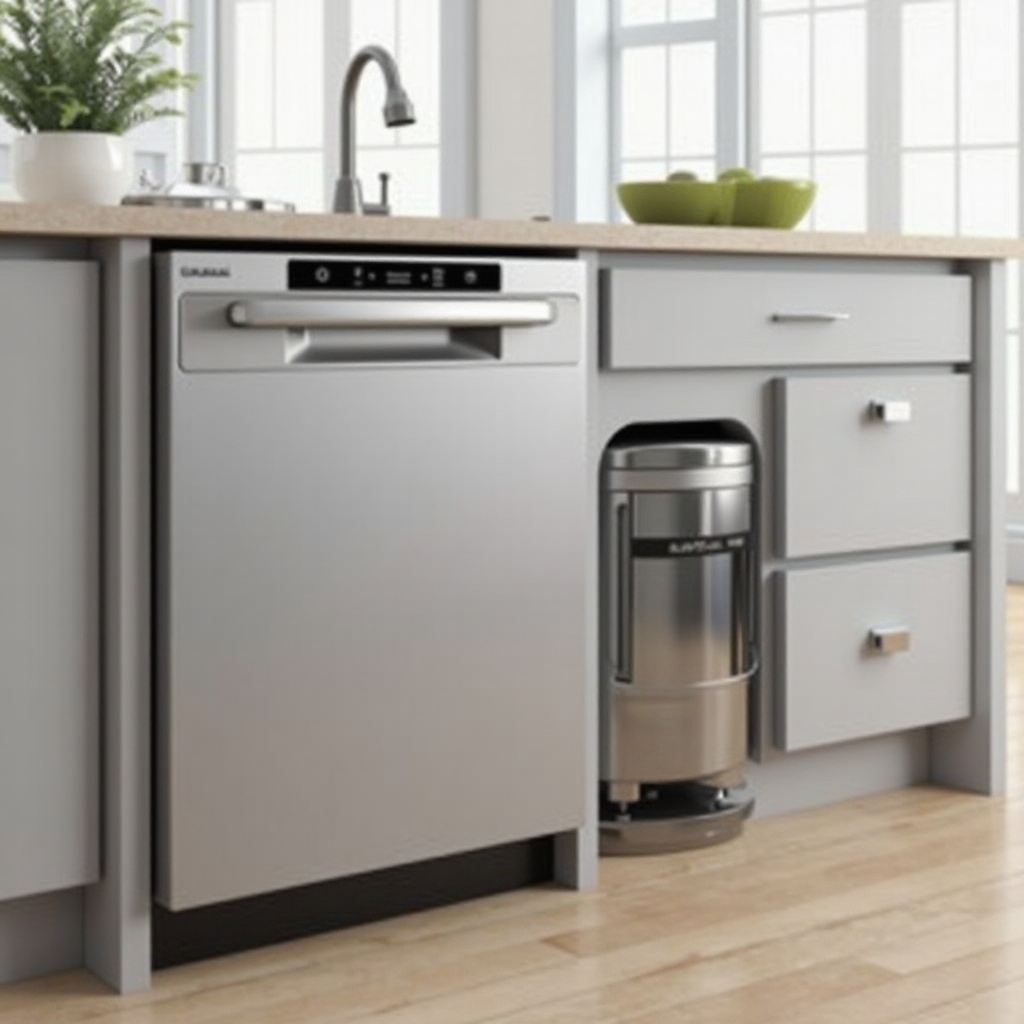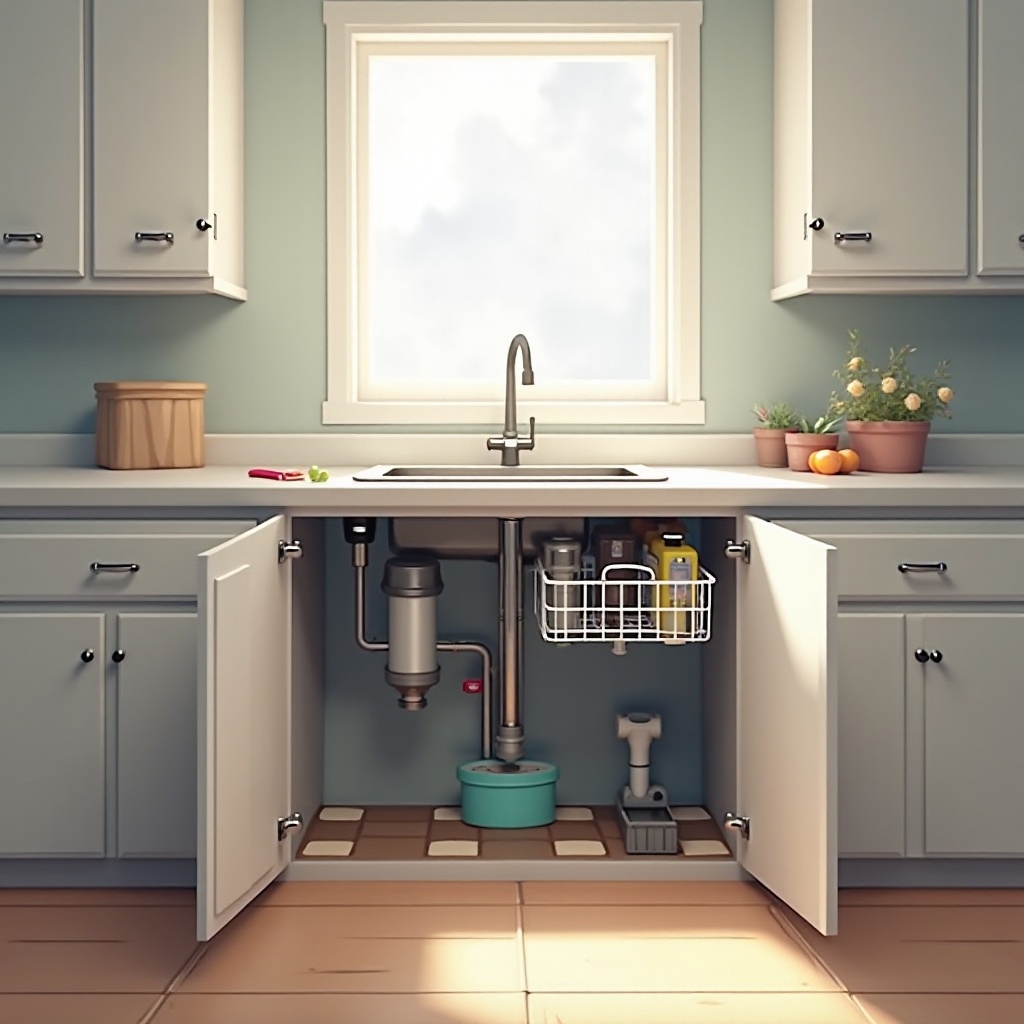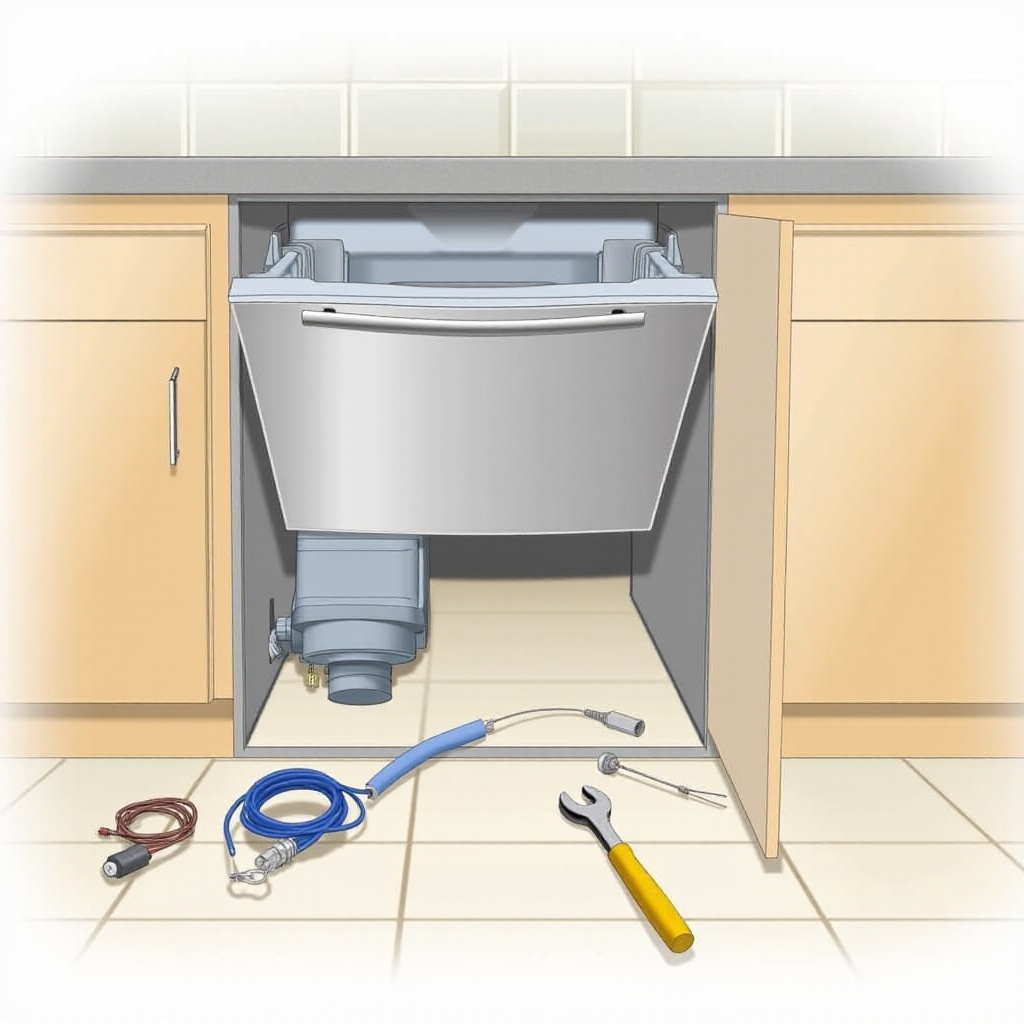Introduction
Installing a dishwasher alongside a garbage disposal can greatly enhance your kitchen's efficiency. This combination seamlessly handles dishwashing and waste management, reducing kitchen task times. However, without the right guidance, the task can seem daunting. This guide will take you through the entire installation process and provide maintenance tips to keep your setup running efficiently. Whether you're upgrading or installing new appliances, you'll find this resource invaluable for a successful project.

Benefits of a Combined Dishwasher and Garbage Disposal System
Combining a dishwasher with a garbage disposal system offers several advantages. It optimizes kitchen space by consolidating appliances, freeing up more room. Additionally, it streamlines the cleanup process, making dishwashing quicker and more efficient.
Moreover, this setup leads to a more hygienic kitchen. By directly channeling food scraps from the dishwasher to the disposal, you minimize odors and pests. Investing in this combined setup not only adds convenience but also keeps your kitchen cleaner.
Tools and Materials Needed for Installation
Before you begin installation, it is crucial to have the right tools and materials prepared. Ensure you have:
- Screwdriver set
- Adjustable wrench
- Plumber’s tape
- Hose clamps
- Drill and drill bits
- Bucket or container for water drainage
- Dishwasher water supply hose
- Power drill with a hole saw attachment
- Pipe cutter
With these tools at hand, you’re well-equipped to proceed with the installation efficiently.
Preparing Your Kitchen for Installation
Proper preparation sets the stage for a smooth installation. Start by assessing the available space to ensure it can accommodate both the dishwasher and garbage disposal comfortably. Accurate measurements prevent surprises during installation.
Next, disconnect and remove any existing appliances. Shut off the water and power supplies to avoid accidents. Confirm that electrical outlets and plumbing align with your new appliances' needs and are in good working order. This preparation phase is essential for a problem-free installation.

Step-by-Step Dishwasher Installation Process
With preparations complete, follow these steps to install your dishwasher:
Position the Dishwasher: Carefully place the dishwasher in its designated spot. Ensure there's adequate room for plumbing and electrical connections and use a spirit level to verify it's even to prevent leaks.
Connect the Water Supply: Attach the water supply hose to the kitchen water supply. Secure the connection with plumber's tape to prevent leaks. Tighten fittings with an adjustable wrench.
Secure the Drainage System: Connect the dishwasher's drainage hose to the sink or garbage disposal. Ensure all connections are tight, using hose clamps where necessary to prevent water escape.
These steps will integrate the dishwasher into your kitchen's infrastructure, readying it for daily use.

Integrating the Garbage Disposal Unit
After setting up the dishwasher, it's time to focus on the garbage disposal integration.
Install and Align with the Sink: Position the garbage disposal under the sink, aligning it correctly. Connect the discharge tube using a rubber gasket to minimize vibrations.
Connect Electrical Components: Make sure the disposal's power is off, and connect it to the electrical supply per the manufacturer's instructions.
Ensure Leak-Free Connections: Use plumber's tape and gaskets to secure all connections. Run water to check for leaks, tightening any loose fittings.
This integration not only boosts efficiency but also enhances cleanliness by effectively managing food waste.
Common Installation Mistakes to Avoid
Being aware of common pitfalls can save you time and effort. Some mistakes to avoid include:
- Measuring Inaccuracies: Incorrect measurements can result in poor appliance fitting. Double-check dimensions before purchasing.
- Incorrect Plumbing Setups: Ensure all hoses and pipes are connected properly to prevent leaks and water damage.
- Electrical Safety Oversights: Always turn off power before dealing with electrical parts to avoid accidents.
Avoiding these mistakes will ensure a smooth installation and extend the lifespan of your setup.
Testing and Troubleshooting Your Installation
After installation, verify everything is functioning correctly by:
Running Initial System Checks: Turn on water and power supplies. Run the dishwasher empty to check for leaks and proper drainage.
Addressing Leakage or Noise Issues: Listen for unusual noises or look for leaks beneath the unit. Tighten connections or adjust positioning as needed.
Optimizing Performance: Confirm that both appliances are operating smoothly. If persistent issues arise, consult manuals or professionals.
Routine checks help maintain appliance efficiency and prevent operational issues.
Maintenance Tips for Prolonged Efficiency
To ensure long-term efficiency, regular maintenance is key. Consider these tips:
Regular Cleaning and Inspections: Clean the dishwasher's filter and spray arms regularly. Inspect hoses for wear and tear.
Preventative Measures for Disposal Unit: Avoid disposing of hard materials that could damage the unit. Use cold water during operation to solidify grease and prevent clogs.
Professional Servicing Intervals: Schedule regular checkups with a professional to fix minor issues before they escalate.
These practices ensure your setup's longevity and consistent performance.
Conclusion
The successful installation of a dishwasher with a garbage disposal significantly upgrades your kitchen's functionality. By following this guide, you can complete the process effectively, ensuring your appliances operate harmoniously. Avoid common mistakes, test your setup thoroughly, and prioritize maintenance to enjoy a seamless kitchen experience. Investing time in getting the installation right provides long-term benefits in convenience and efficiency.
Frequently Asked Questions
How do I know if my setup is compatible with a garbage disposal?
Check your kitchen's plumbing and electrical setup compatibility. Consult your appliance manuals or a professional for guidance.
What is the average time needed for installation?
Installation typically takes 2 to 5 hours, depending on experience and kitchen infrastructure. Proper preparation and tools can streamline the process.
Can I install a dishwasher with a garbage disposal by myself, or should I hire a professional?
Self-installation is possible with the right tools and instructions, but hiring a professional ensures code compliance and can prevent costly errors.
